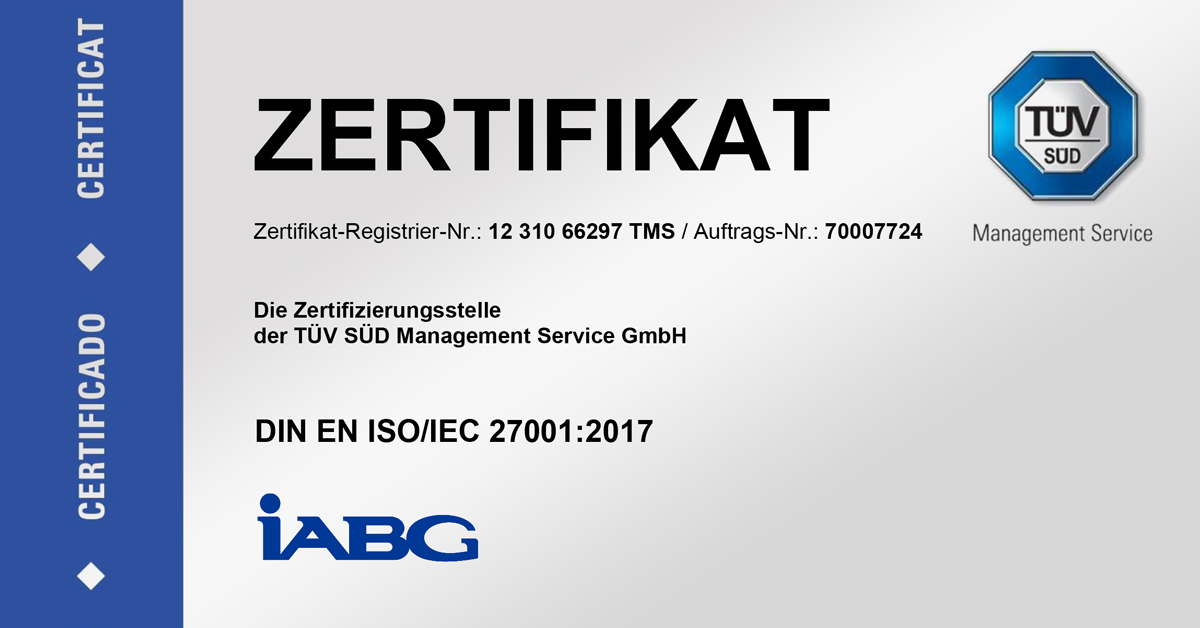ELITE is an annual, complex high-level training of the air force. It represents a particular highlight in the deployment training and further education of the flight crews, the management and functional staff of the surface-to-air missile and radar management services. As the name implies, the focus of ELITE is on the training of “electronic combat (EloCom).”
At ELITE, IABG experts support mission planning and evaluation. The basis for this is the network compatible test and experimental environment TEXnet. It is, so to speak, the foundation on which the simulation systems and components for the different applications are based. For example, the ECONDUA simulation system used during ELITE, which maps air attacks. Additional TEXnet components are used to analyse the effectiveness of the EloCom measures and to record data in the HARM guided missile.
Over and beyond its use at ELITE, the versatility and high quality of the components and simulation systems incorporated in TEXnet was already demonstrated in February this year. In the context of the multinational “Concept Development and Experimentation (CD&E)” programme, the simulation system JOANA was combined with US American models and management systems at the US Joint Forces Command in Norfolk and successfully used in the “Multinational Experiment (MNE3).” JOANA maps the troop level (joint/combined) and can cover the transition from peacekeeping measures to combat measures without a break in media. Small wonder that the participants of the command and control unit in Potsdam assessed JOANA very favourably.
IABG has also been represented at ILA 2004 in Berlin with TEXnet. Visitors could also view the simulation system “BNS,” jointly developed by IABG and EADS. BNS is a modern weapons system simulation for a future modular air defence system of the army. It enables the analysis of future abilities, can be used to document the history of hardware and software and can be used for training.
IABG places particular value on the fact that a system development across the company, based on the modular software architecture implemented in TEXnet, is feasible and makes sense. BNS provided impressive proof of this. Important key words for technical specialists are “HLA – High Level Architecture,” “PSISA” and “GERTICO.” These technologies facilitate the cross-sectional use of simulation components. This was already successfully demonstrated with “SAMOC,” the future combat headquarters of surface-to-air missile services. For embedded training, SAMOC uses the MOCCA simulation system, developed by IABG and passed its first test during the recent air defence exercise “Joint Project Optic Windmill (JPOW VIII)” in April 2004. The German navy was represented there with its virtual frigate SIMBURG, which is based on TEXnet.
- Business Fields
-
Automotive
- Automotive
-
-
Testing and fatigue strength
- Testing and fatigue strength
- Complete vehicles
- Vehicle bodies
- Chassis
- Engine & Powertrain
- Interiors
- Safeguarding mechatronic systems
- Advice on Test Programmes and Test Signals
- Prüfstandsbau
- Development Services
- Climatic Environmental Simulation
- Materials Testing and Failure Analysis
- Publications
-
Testing and fatigue strength
-
InfoCom
- InfoCom
-
- Shaping digitization securely
-
Cyber security
- Cyber security
- ISMS and risk analysis
- Technical IT security
- Cyber Defence
- BOS Digital Radio Network
- Industry 4.0 / Internet of Things
- Control and situation centres
- Satellite navigation - Satellite communication
- Safe City
- IT Public procurement management
- Government Agency Networks
-
Mobility • Energy
- Mobility • Energy
-
- Rail & track
- Sicheres Autonomes Fahren
- Testing and qualifying hydrogen technologies
- Construction of burst chambers
- Nuclear technology
-
Safeguarding of artificial intelligence (AI)
- Safeguarding of artificial intelligence (AI)
- The new DIN SPEC 92005
-
Engineering and Support of wind energy plants
- Engineering and Support of wind energy plants
- Technical computations and system simulation
-
Testing & qualification of wind energy plants
- Testing & qualification of wind energy plants
- Test stand construction and testing
- Testing and Fatigue Strength
- Materials Testing and Failure Analysis
-
Mobility services
- Mobility services
- Inductive energy transmission
- Environment & geodata service
-
Aeronautics
- Aeronautics
-
- Experimental testing
- Development of functional and system test benches
- Structural monitoring, inspection and analysis
- Functional Safety and Operational Safety
-
Provision of the test infrastructure
- Provision of the test infrastructure
- Our test halls and test sites
- Functional test benches
- References
- Publications
-
Space
- Space
-
- Mechanical Tests
- Space Simulation tests
-
Electromagnetic Tests
- Electromagnetic Tests
- Electromagnetic compatibility (EMC)
- Magnetic field measurement / Magnetic field simulation
- Infrastructure
- Engineering support
-
Management consulting
- Management consulting
- Programme Support
- Consulting on the implementation of management systems
- Project references
-
Defence & Security
- Defence & Security
-
- Domains
-
Services & solutions
- Services & solutions
- Capability Management
- Procurement support
- Services, operation & training
- Smart Tools
-
Expertise
- Expertise
- Integrated Logistics
- Life Cycle Cost Management
- IT-Security
- Survivability
- Vulnerability & effect on target
- Human factors & ergonomics
- Safety
- Systemic Analysis
- Security Policy
- Architecture & Process modelling
- Modelling & Simulation
- Intelligence, Surveillance & Reconnaissance (ISR)
- Systemt engineering AIR
- System engineering SPACE
- System engineering MARITIME
- Armament
- Sensor systems
- C4I systems
- Protection, Impact- and High Risk Testing
- Technology Roadmapping
- Innovation


